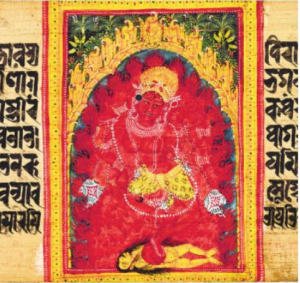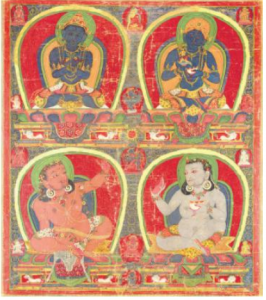ForumIAS announcing GS Foundation Program for UPSC CSE 2025-26 from 19 April. Click Here for more information.
ForumIAS Answer Writing Focus Group (AWFG) for Mains 2024 commencing from 24th June 2024. The Entrance Test for the program will be held on 28th April 2024 at 9 AM. To know more about the program visit: https://forumias.com/blog/awfg2024
Source– This post is based on the article “The art of Tantric Buddhism” published in “Live mint” on 2nd December 2023.
Why in the News?
The recently published book ‘Buddhism: A journey through art’, written by R. M. Woodward, looks at Asia’s Buddhist art traditions, especially Tantric Buddhist painting and sculpture.
What is Tantric Buddhism?
Tantric Buddhism, also known as Vajrayana Buddhism, is a form of Buddhism that developed in India and later spread to Tibet, Bhutan, Mongolia, and other regions.
Key aspects of Tantric Buddhism–
1) Vajrayana Buddhism is regarded as the third turning of the wheel of Dharma
2) It views enlightenment as something that can be attained in a single lifetime.
3) It draws upon elements of Mahayana Buddhism but also includes unique practices and teachings, such as tantra, deity yoga, meditative techniques, and esoteric rituals.
4) This school claims that Tantras, Mantras, and Yantras are superior vehicles to liberation since they contain numerous sophisticated tantric ritual practices.
5) Schools of Tantric Buddhism– The four main schools are Nyingma, Kagyu, Sakya and Gelug (Gelug is the newest and most dominant school of the Vajrayana schools and Nyingma is the oldest)
6) Dieties
– Tantric Buddhism incorporates a rich pantheon of deities, each representing different aspects of the enlightened mind. Common deities include Tara, Avalokiteshvara, Manjushri, and Vajrapani.
7) This tradition is also known for its colourful and intricate mandalas, as well as its association with the Dalai Lama (considered the highest lama of the Gelug school)
What is the significance of art in Tantric buddhism?
Tantric Buddhism uses art for teaching, healing, and meditation. In tantrism, art is seen as a powerful instrument for aiding spiritual development through rituals. Paintings of deities are used as a tool to evoke the subject or in some cases make contact directly.


UPSC Syllabus- Art & Culture




